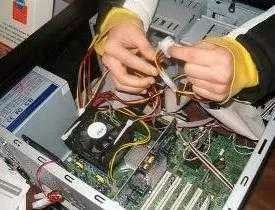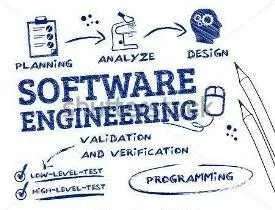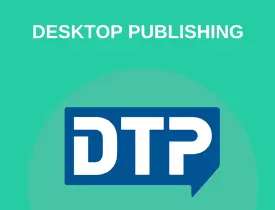Description
Course Name: Advance Diploma in Information Technology
Course Id: ADIT/Q1001.
Education Qualification: 10th Pass.
Duration: 370 Hrs.
How You will Get Diploma Certificate:
Step 1- Select your Course for Certification.
Step 2- Click on Enroll Now.
Step 3- Proceed to Enroll Now.
Step 4- Fill Your Billing Details and Proceed to Pay.
Step 5- You Will be Redirected to Payment Gateway, Pay Course and Exam Fee by Following Options.
Card(Debit/Credit), Wallet, Paytm, Net banking, UPI and Google pay.
Step 6- After Payment You will receive Study Material on your email id.
Step 7- After Completion of Course Study give Online Examination.
Step 8- After Online Examination you will get Diploma Certificate soft copy(Scan Copy) and Hard Copy(Original With Seal and Sign).
Step 9- After Certification you will receive Prospect Job Opportunities as per your Interest Area.
Online Examination Detail:
- Duration- 120 minutes.
- No. of Questions- 60. (Multiple Choice Questions).
- 10 Questions from each module, each carry 10 marks.
- Maximum Marks- 600, Passing Marks- 40%.
- There is no negative marking in this module.
| How Students will be Graded: | ||
| S.No. | Marks | Grade |
| 1 | 91-100 | O (Outstanding) |
| 2 | 81-90 | A (Excellent) |
| 3 | 71-80 | A (Very Good) |
| 4 | 61-70 | B (Good) |
| 5 | 51-60 | C (Average) |
| 6 | 41-50 | P (Pass) |
| 7 | 0-40 | F (Fail) |
Benefits of Certification:
- Government Authorized Assessment Agency Certification.
- Certificate Valid for Lifetime.
- Lifetime Verification of Certificate.
- Free Job Assistance as per your Interest Area.
Syllabus
Advance Diploma in Information Technology
Information Systems Principles and Networking
Meaning and Importance of determining information system, Purpose of Information Systems: Data vs. Information vs. Knowledge, Using Information Technology to gain a Strategic Advantage in the Marketplace, The Components of Information Systems, components and functions of computer systems, both hardware and software, advances in networking, data communications and the Internet and how they affect the way business is conducted, Data Resource Management: Technical Foundations of Database Management, Components of a Database Application System, Managing Data Resources and Warehouses, Database Security, Data Communication and Internet Technology: Telecommunications Network Alternatives, Planning Information Systems: Systems Development Life Cycle, Security and Systems Development, Planning Information Systems: Systems Development Life Cycle, Object Oriented Systems Development, Security and Systems Development, Information Systems within Organizations: Survey of Functional Systems, Competitive Strategy and Value Chains, Business Process Design.
Information Systems, Analysis and Design
Perform all aspects of the SDLC planning phase, Perform all aspects of the SDLC analysis phase., benefits and limitations of the steps and deliverables used in information systems projects, Analyze the competitive advantage that IS projects can bring to an organization, Work in a project-team setting, major technological, organizational, behavioral, ethical issues facing today’s information systems professional, IT strategy formulation, operational and strategic decision making in an organization, difference between supporting a business with technology and driving a business with technology, concept of client side scripting and server side scripting, Use different editors available for writing code , Understand working of editors, role of front end and back end application, principles of software development project management, lifecycle approach to systems analysis, project selection process, create the various system analysis graphical methods.
Advanced Programming
Knowledge and understanding: Understand some advanced programming concepts, Deal with complex data objects as whole entities, rather than by twiddling with their elements, Cognitive skills (thinking and analysis): Define the problem and write large programs, Analyse a problem and determine what problem elements to represent as functions or objects, Communication skills (personal and academic) : Effectively use parameterization and inheritance to promote reuse, Develop programs with networking and multithreading, Compose more complex programs from simpler parts, Write programs that implement GUIs, understanding of Java by implementing relatively large programs, object oriented paradigm, analyze the problem in terms of use cases and create object oriented design for it, present the design in UML or other related tools, apply pattern oriented program design and implement using design patterns, unit testing and test driven development.
Business Data Processing
Meaning and purpose of Data processing – Source documents data input data Manipulation – Output of information – data storage -Files and Records – file creation – File access – File manipulation and maintenance – File generation – sequential and Direct file organization, Meaning and purpose of windows – menus – Dialog Boxes – File Management under Windows, features of word processing under Windows – Microsoft Word – File Menu – Using Letter wizard for producing business letters -Entering, selecting, inserting, viewing text – Normal view – Page view – Point view – Zooming the view – character and paragraph formatting – Printing a document, Introduction to database – concepts of relational Database Management Applications – Types of Database Models – Network Model Hierarchical Model – RDBMS – ORDBMS, Introduction to spreadsheet – spreadsheet overview – formatting worksheet Data – Relative and absolute Referencing – working with Formula working with Function.
Web Programming Concepts
Introduction to Java and its Features, Introduction to object oriented paradigm, Concepts of Object – Oriented programming (Objects and Classes, data abstraction and data abstraction and encapsulation, inheritance, polymorphism, Dynamic binding), Classes, Objects and Methods, Introduction, Defining a class, adding variables and methods, creating objects, accessing class members, constructors, method overloading and overriding, Interfaces – Introduction, Defining interfaces Extending Interfaces, implementing interfaces, accessing interface Variables, Introduction, how applets differ from applications, building applet code, applet Life Cycle initialization state, running state, idle or stopped state, dead state, Display state, Creating an executable applet, designing a web page, Introduction, concept of streams, stream classes, byte stream classes, character stream classes, using Streams, other useful I/O classes, and introduction to JDBC, Exceptions, syntax of exception Handling code, multiple catch statements, using finally statement, throwing our own exceptions.
Cyber Security
Classes and Objects – Introduction, structures and classes, declaration of classes, member functions, defining the object of the class, accessing a member of class, array of class objects, pointer and classes, classes with classes (Nested class), Constructors, copy constructor, default constructor, Destructors, inline member Functions, Friend functions, Dynamic memory allocations, this pointer, Inheritance – Introductions, single inheritance, types of derivations, public inheritance, private Inheritance, protected inheritance, array of class objects and single inheritance, Multiple inheritance, multilevel inheritance, hybrid inheritance, Overloading – Function overloading, function overloading with various data types, function overloading with arguments, operator overloading, overloading assignment Operator, Polymorphism – Polymorphism, early binding, virtual functions, late binding, pure virtual Functions, abstract base classes, virtual base classes, Templates and Exception Handling, Function templates, class templates.






